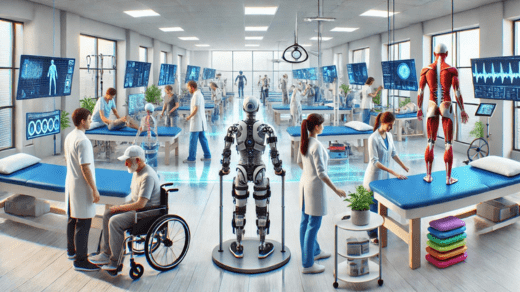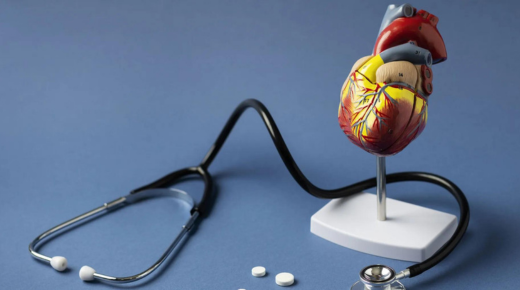Personalized rehabilitation plans are crucial for empowering patients to achieve optimal recovery and improve their quality of life. By tailoring rehabilitation programs to meet the unique needs and goals of each patient, healthcare providers can enhance the effectiveness of therapy and foster greater patient engagement. This article explores the importance of personalized rehabilitation plans, the key components involved, and the benefits they offer to patients.
Understanding Personalized Rehabilitation Plans
What are Personalized Rehabilitation Plans?
Personalized rehabilitation plans are individualized therapy programs designed to address the specific medical conditions, functional limitations, and personal goals of each patient. These plans are developed through a comprehensive assessment and involve a multidisciplinary team of healthcare professionals, including physical therapists, occupational therapists, speech therapists, and physicians.
Importance of Personalized Rehabilitation Plans
Personalized rehabilitation plans are essential for providing targeted and effective therapy. By considering the unique needs and preferences of each patient, these plans ensure that rehabilitation is relevant and meaningful. This personalized approach enhances patient motivation, adherence to therapy, and overall outcomes.
Key Components of Personalized Rehabilitation Plans
Comprehensive Assessment
The development of a personalized rehabilitation plan begins with a thorough assessment of the patient’s medical history, current health status, functional abilities, and personal goals. This assessment involves various evaluations, such as physical examinations, diagnostic tests, and patient interviews.
Multidisciplinary Collaboration
Creating an effective personalized rehabilitation plan requires the collaboration of a multidisciplinary team. This team typically includes physical therapists, occupational therapists, speech therapists, physicians, and other specialists. Each team member contributes their expertise to develop a comprehensive and cohesive plan.
Goal Setting
Setting specific, measurable, achievable, relevant, and time-bound (SMART) goals is a critical component of personalized rehabilitation plans. These goals provide a clear direction for therapy and help track progress. Goals are established in collaboration with the patient to ensure they are meaningful and motivating.
Tailored Therapy Interventions
Personalized rehabilitation plans involve tailored therapy interventions that address the specific needs and goals of the patient. These interventions may include exercises to improve strength and mobility, activities to enhance daily living skills, speech therapy for communication difficulties, and more. The interventions are adjusted as needed based on the patient’s progress and feedback.
Patient and Family Education
Education is a vital component of personalized rehabilitation plans. Patients and their families are provided with information about the rehabilitation process, the importance of adherence to therapy, and strategies for managing the condition at home. This education empowers patients and their families to take an active role in the rehabilitation process.
Benefits of Personalized Rehabilitation Plans
Enhanced Patient Engagement
Personalized rehabilitation plans significantly enhance patient engagement. When therapy is tailored to meet the unique needs and goals of each patient, it becomes more relevant and meaningful. This relevance motivates patients to actively participate in their therapy and adhere to the prescribed interventions.
Improved Outcomes
By addressing the specific needs and goals of each patient, personalized rehabilitation plans lead to improved outcomes. Patients are more likely to achieve their rehabilitation goals, experience fewer complications, and enjoy a better quality of life. The targeted approach ensures that therapy is effective and efficient.
Greater Satisfaction
Patients who receive personalized rehabilitation plans often report higher levels of satisfaction with their care. The individualized approach makes patients feel valued and understood, enhancing their overall experience. Satisfied patients are more likely to engage in their therapy and adhere to their treatment plans.
Faster Recovery
Tailored therapy interventions and the active involvement of patients in their rehabilitation process contribute to faster recovery. Personalized rehabilitation plans ensure that patients receive the right type and intensity of therapy at the right time, promoting optimal healing and recovery.
Examples of Personalized Rehabilitation Plans
Stroke Rehabilitation
A stroke patient’s personalized rehabilitation plan may include physical therapy to improve mobility and strength, occupational therapy to enhance daily living skills, and speech therapy to address communication difficulties. The plan is adjusted based on the patient’s progress and specific needs.
Post-Surgical Rehabilitation
For a patient recovering from surgery, a personalized rehabilitation plan might involve pain management strategies, exercises to restore strength and flexibility, and activities to regain independence in daily living. The plan is tailored to the type of surgery and the patient’s individual recovery goals.
Chronic Pain Management
A personalized rehabilitation plan for a patient with chronic pain could include physical therapy, pain management techniques, and lifestyle modifications. The plan addresses the patient’s specific pain triggers and aims to improve their quality of life through targeted interventions.
Pediatric Rehabilitation
In pediatric rehabilitation, personalized plans are developed to meet the unique needs of each child. These plans may involve play-based therapy, exercises to enhance motor skills, and activities to support cognitive development. The approach is tailored to the child’s developmental stage and individual goals.
Technology in Personalized Rehabilitation Plans
Telehealth Services
Telehealth services play a significant role in personalized rehabilitation plans. They provide patients with access to therapy sessions, consultations, and follow-up appointments from the comfort of their homes. This technology enhances accessibility and convenience, especially for patients with mobility challenges or those living in remote areas.
Wearable Devices and Remote Monitoring
Wearable devices and remote monitoring technologies allow healthcare providers to continuously track patients’ progress and adjust therapy interventions as needed. These technologies provide real-time data on patients’ activity levels, vital signs, and adherence to therapy, enabling more precise and personalized care.
Virtual Reality (VR) Therapy
Virtual reality therapy is an innovative approach that can be incorporated into personalized rehabilitation plans. VR therapy provides immersive and interactive environments for patients to engage in therapeutic activities. This technology is particularly effective in enhancing motivation and engagement in rehabilitation exercises.
Challenges in Implementing Personalized Rehabilitation Plans
Resource Allocation
Implementing personalized rehabilitation plans requires significant resources, including time, personnel, and technology. Healthcare providers must strategically allocate these resources to ensure that all patients receive individualized care without overburdening the healthcare team.
Coordinating Multidisciplinary Teams
Effective coordination among multidisciplinary teams can be challenging. Regular communication, clear protocols, and the use of electronic health records are essential for ensuring that all team members are aligned and informed about the patient’s rehabilitation plan and progress.
Ensuring Patient Adherence
Ensuring patient adherence to personalized rehabilitation plans can be difficult. Healthcare providers must engage patients and their families through education, support, and motivation strategies to encourage consistent participation in therapy.
Future Directions in Personalized Rehabilitation
Advancements in Technology
The future of personalized rehabilitation will likely see further advancements in technology. Innovations such as artificial intelligence and machine learning can enhance the precision and effectiveness of rehabilitation plans. These technologies can analyze vast amounts of patient data to predict outcomes and tailor interventions more accurately.
Expanding Access to Personalized Rehabilitation
Expanding access to personalized rehabilitation services is a key future direction. This includes increasing the availability of telehealth services, developing community-based rehabilitation programs, and forming partnerships with other healthcare providers. These efforts aim to ensure that more patients can benefit from personalized rehabilitation plans.
Emphasizing Preventive Rehabilitation
Preventive rehabilitation focuses on early intervention and prevention of complications. By identifying patients at risk and implementing personalized rehabilitation plans early, healthcare providers can prevent the progression of conditions and reduce the need for intensive treatments.
Integrating Patient Feedback
Incorporating patient feedback into the development and adjustment of personalized rehabilitation plans is crucial. Regularly collecting and analyzing feedback helps healthcare providers understand patients’ experiences and preferences, leading to more patient-centered and effective rehabilitation.
Personalized rehabilitation plans empower patients to achieve their rehabilitation goals and improve their quality of life. By tailoring therapy to meet the unique needs and preferences of each patient, healthcare providers can enhance engagement, outcomes, and satisfaction. The integration of advanced technologies and a multidisciplinary approach further supports the effectiveness of personalized rehabilitation plans. As healthcare continues to evolve, the emphasis on individualized care will remain a cornerstone of effective rehabilitation, ensuring that patients receive the best possible support on their journey to recovery.




